Little Women production designer on making a classic tale feel thrillingly modern

Between now and the Oscar nominations on Jan. 13, EW will speak to numerous contenders in below-the-line categories about their work and craft. This week, Little Women production designer Jess Conchor talks to EW all about updating the classic story with Greta Gerwig, from recreating Louisa May Alcott’s home to working within the historically preserved sites of Concord, Mass. Check out EW’s full list of Oscar predictions here.
Making an old tale feel new is never easy, especially when it’s one we’ve seen regularly adapted for the screen. But together with director Greta Gerwig, production designer Jess Gonchor felt ready to take on the challenge of a lovingly reinvented Little Women.
The two-time Oscar nominee, best known for his collaborations with the Coen Brothers — he’s worked on more than half a dozen movies for the filmmakers, from No Country for Old Men to Hail, Caesar! — found that his vision for a Little Women adaptation aligned closely with the director behind it. EW caught up with him on that and more.
Home-field advantage
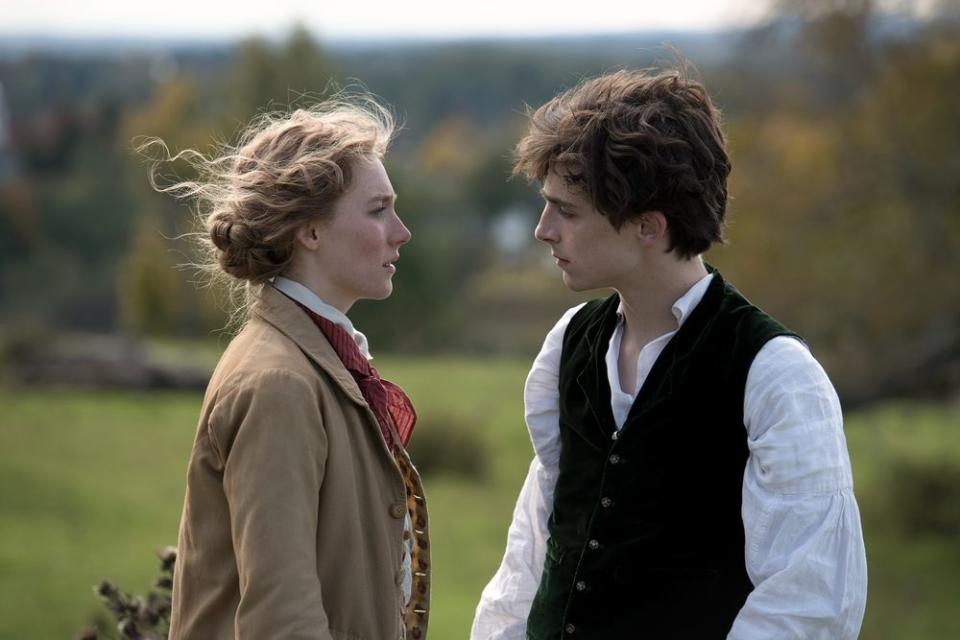
Here’s the first Little Women to get months of shooting time in the actual place where Louisa May Alcott wrote and set the story, more than 150 years ago: Concord, Mass. Gerwig and Gonchor found primary inspiration in Alcott’s house, which has been historically preserved, recreating it for their version of the March home. But that’s only where the Concord vibes in the film began. “We were lucky enough to shoot in the place where the story was written,” Gonchor says. “Just being around there was totally inspiring and also informative of what we needed to recreate, because of so many things historically preserved there. Whether we can shoot there or not, we were able to recreate it. We had great reference right in front of our eyes.”
Modern in spirit, faithful in execution
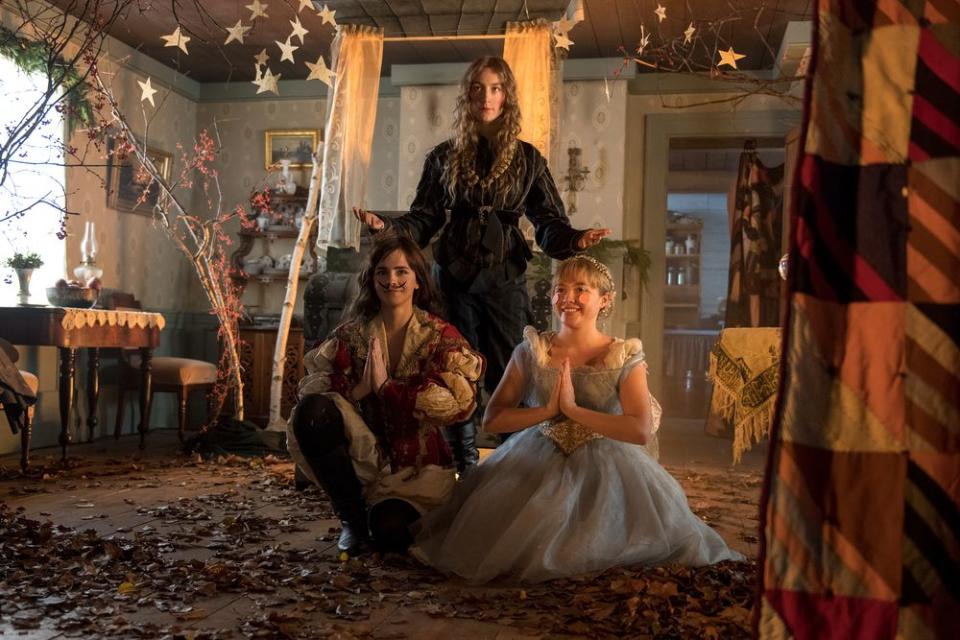
That this Little Women feels so fresh is a testament to the artistry of those involved, since it’s awfully faithful to Alcott’s text. For Gonchor’s part, he’d seen previous adaptations — the older Katharine Hepburn classic, the 1994 version starring Winona Ryder — and is deeply admiring of them. But he felt ready to do something different, something grander. “Times have changed since ’94. Everything has gotten bigger,” he says. “I just wanted to bring that in: Still wanted to have it be a period movie, but have it have a contemporary vibe. It’s what Greta wanted to do, too. We had to take what they did and what the book did and really expand the scope of it, and tell the stories of these girls leaving home and coming back home. Make it a bigger visual story than some of the previous versions — using what we had today to expand on it.”
This meant livening up the spaces they were recreating. Gonchor says that Alcott’s house — the central visual inspiration for the film — “is pretty drab and fairly antiquated,” in line with the times. “So we embellished a little bit,” he says. “Made it more colorful and a little bit bigger, just so there was circulation, room for the girls to have attitude and perform.” He likens his mission in creating the March home to “an older, worn-in jewelry box”: “When you open it up, it’s lined with color and colorful jewels.” He says his aim was to make this look like the opposite of a documentary.
Fluid timelines
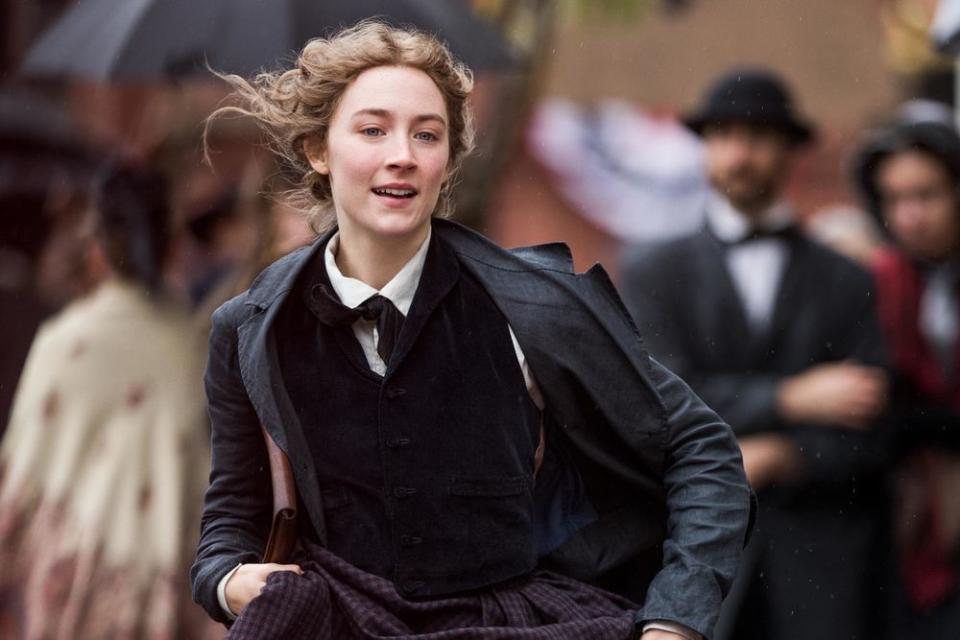
Gerwig’s ambitious timeline-shifting, moving back and forth between the girls’ lives in adulthood and childhood, presented some clear challenges for Gonchor, who couldn’t convey transformation as drastically as a mid-film act change would allow. “You really saw it in the March house, which we were constantly redressing,” he says.”I did as much as I could to have it look five years, six years later or earlier without going crazy. It would have been too distracting if something was completely different — like rooms rearranged, wallpaper different, painting different. We didn’t want it to be that jarring with the time shifts.”
But on the other side, he felt the need to give the women’s adult lives a greater scope, as Jo (Saoirse Ronan) and Amy (Florence Pugh) pursued their ambitions in New York and Europe, respectively, far from the small-town coziness of their upbringing. “Making New York City feel bigger, the European travels that Amy has — I didn’t want to make any of my locations or stages look dated,” he reiterates. “I wanted them to look like someone would want to live in there, right now and today.”
Challenges of authenticity
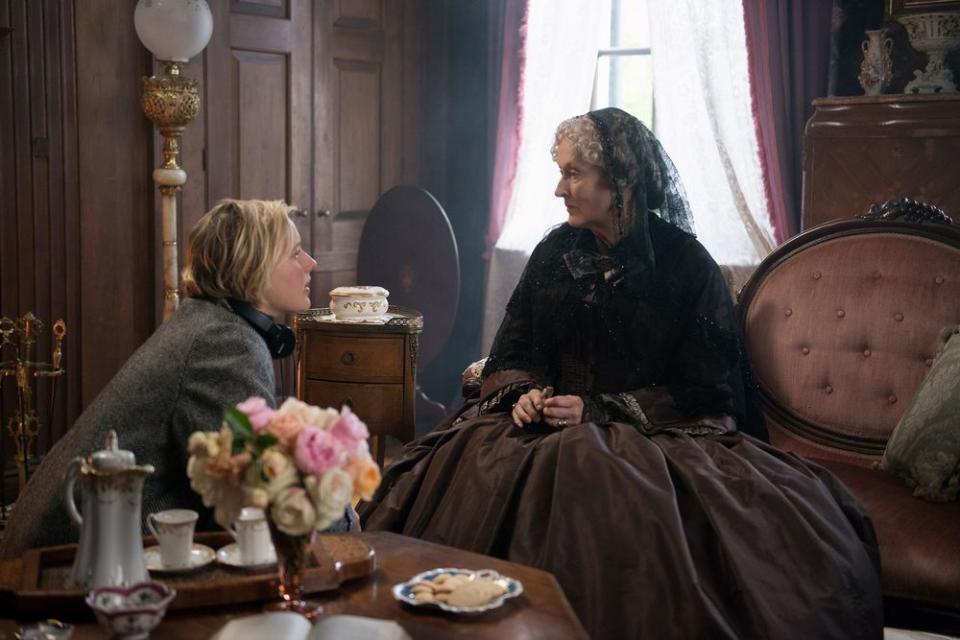
In addition to recreating and building sets like the March home, Little Women also shot on location at several historically preserved sites. This imbued the movie with a real sense of place, but also presented unexpected obstacles for Gonchor. “There were some places that we went into location-wise and used bits and pieces that were so sensitive because of their historic preservation of them,” he says.
In an early scene at the Gardiners’ party that Jo and Meg (Emma Watson) attend, and where Jo and Laurie (Timothée Chalamet) enjoy a buoyant impromptu dance, several considerations had to be made. “You can’t burn candles in there, you can’t have a fire in there, you can’t put weight on anything,” Gonchor recalls. “We had to build things to hang lights on so they could actually light the set, but it didn’t look like lights. You couldn’t put any nails in the walls.” He calls abiding by these rules while still trying to make this sweeping movie his “greatest challenge.”
A rewarding ending
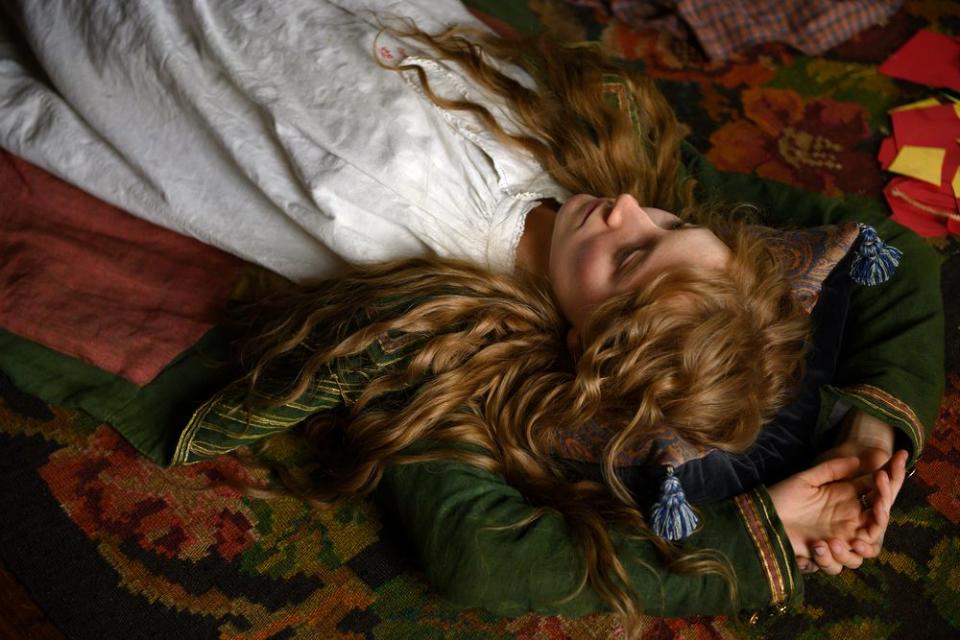
It’s no secret that Gonchor has worked on some great films — including a Best Picture winner, in fact — but he found Little Women a distinctive experience in the best way. “Usually when you go make a film [for] Hollywood, you have to go to, like, Louisiana and make it look like Ireland,” he cracks. “We were fortunate enough to be in a beautiful place, in the fall, which was just a wonderful thing.” And with most of the movies he’s worked on in the past being, let’s say, a bit less accessible, he still recalls the joy of actually seeing Gerwig’s Little Women for the first time. “I work on a lot of movies that are heavy, man,” he says. “This was a fun ride.”
Little Women hits theaters Dec. 25.
Related content:

